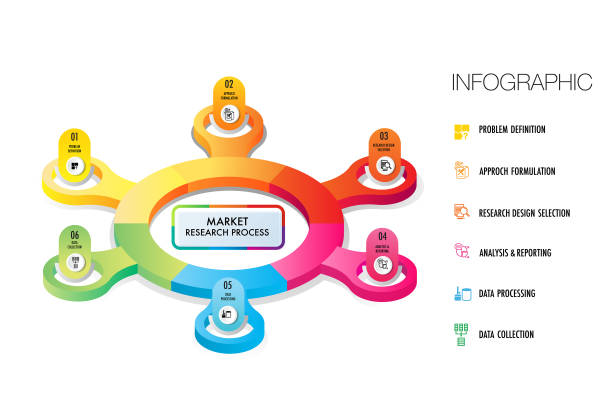Market Research Process: 6 Steps to Project Success

Market Research Process: 6 Steps to Project Success
Market research involves understanding your audience. It also includes an in-depth look at the larger market landscape. This includes trends that affect your industry, as well as top competitors in your market. Market research is essential in boosting marketing and sales. Where do you start?
What is market research?
Market research is the process of gathering information and data to identify your target market, their wants, and requirements, and to shape your messages and offerings according to your market’s needs.
You can gather information about customers’ opinions on your products, services, and events. Also, you can gain insights into your competition, as well as their perceptions of your brand.
You can use the data you collect to guide your business decisions, such as deciding what products and services you should offer or how you should market them. It will also help you improve your customer’s experience and position your company in the market.
Benefits of Market Analysis
Market research has many benefits. Market research can be used to:
- You can identify your target market and get a better understanding of their needs.
- Get insights on the current market and your competitors
- Product development: Identify new market opportunities and guide product development
- Customer loyalty can be built by increasing engagement, generating feedback, and building customer loyalty
- Marketing and sales channels: Improved tactics
- We can help you identify risks, challenges, and growth opportunities in your business.
- Measure KPIs, ROI, and other metrics
- You can make strategic, data-driven decisions to grow your company
Marketing Research Process Examples
Market research is an important step for businesses to make informed decisions regarding their products, services, and market positioning. There’s always something to improve, no matter how big a company is.
Apple is a good example. Apple used market research in order to understand why iPhone sales were declining, and Android sales soared.
Coca-Cola also conducts research for business decisions, sometimes at its own expense. In the 1980s, Coca-Cola decided to change the Coke recipe and introduce “New Coke” based on the results of a study. While the research supported the decision, the strategy for market research was flawed. This led to a disastrous drop in sales.
Sometimes, even the most successful and competitive brands make mistakes when trying to grow their business. Follow the steps below to ensure that your market research study is a successful one. Also, consider carefully how you are building your study.
Marketing Research Process: 6 Steps
Are you ready to start your market research? This six-step guide will help you to get started. Check out these tips on how to create a successful market research plan.
1. Identify the problem and define it
Market research begins with identifying the research problem or question and setting goals and objectives. Consider your research question to be SMART (specific, measurable, achievable, relevant, and time-bound), allowing you to dig deeper.
2. Research Approaches to Consider
This step involves developing a plan to design your study and collect and analyze your data. This step involves:
- Budgeting
- Formulating hypotheses
- Evaluation of external factors such as the economy and environment
- Choosing your data collection methods, including surveys, interviews, focus groups, etc.
- How to select a sample size and the sampling technique
- Decide on your method of data analysis
3. Collecting Data
Online surveys, focus groups, and one-on-one in-person interviews can all be used to collect data. The most important part of any research survey is the design of a survey or question.
It takes time and thought to design a question. We say, “If garbage is put in, garbage will come out.” This means if your questions are bad, then the data you get will also be bad. Keep in mind your intended sampling methods and factors for data analysis when designing the survey.
Test your survey to make sure you are collecting the right data. This step is made easier with the online survey tool.
4. Analyze Data
After you have collected all the relevant data, it is time to analyze. You can use any online survey tool to manage the data and analyze it quickly. When you examine your data, it’s important to look for patterns, trends, and insights that will help answer your research questions.
5. Interpret Your Results
You should apply the results of data analysis to your business. You can make future business decisions based on your findings. This includes product development, pricing strategies, and marketing campaigns.
You’ll now use the data to develop a market strategy for moving forward, which you can then present to your larger team.
6. Present your findings and take action
Report your survey findings and make recommendations and calls to action using these findings.

